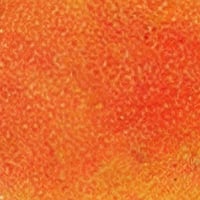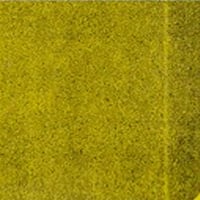kottke.org posts about design
Second part of a two-part interview with designer Michael Bierut. “I’ve found that any reluctance I’ve had to doing more of this ‘political design’ has to do with my own fear that things like T-shirts and posters are usually feeble tools to address the enormous problems we face as a society today.” Read part one.
You’ve probably seen this by now, but if you haven’t, you should. BumpTop is a prototype of a new desktop metaphor for computing, and a pretty damn intriging one at that.
Update: Peterme isn’t impressed. I don’t think BumpTop is going to replace WIMP either, but there are certainly some applications where some of the BT ideas could be useful.
Big 10th anniversary package from Slate. It’s interesting to see how it has evolved. Here’s a slideshow of the design through the years…the stuff about their failed subscription business model and how they lost marketshare because of it is relevent in the ongoing TimesSelect debate.
Interview with designer Michael Bierut. “The best thing design can do for a company is to express that company’s personality accurately and compellingly, and in so doing permit that organizations inherent strengths to prevail.”
Six Apart recently launched a preview version of their new Vox blogging service. When you log in to Vox, one of the first things you notice on the front page is the Question of the Day followed by a quick posting box. Answer the question, press “continue”, and you’ve got yourself a blog post. I asked Six Apart president Mena Trott how the feature came about.
Jason: Everyone loves the Question of the Day feature on Vox. The QotD cleverly formalizes the memes that travel through LiveJournal and the blogosphere at large, making it OK for the kind of people who hate email joke forwards to participate collectively in something on a regular basis. Who is responsible for generating these questions? Are they recycled memes from LJ or do you have some meme genius working for 6A?
Mena: Question of the Day actually started in a design comp I did — meaning it hadn’t been specified in any product requirements docs. I was creating the Vox dashboard and realized that the one thing really missing from the page was a call to action. So, I tried to think what would be the one thing that would make me want to post and the Question of the Day made total sense.
You’re exactly correct in saying that we’re wanting to legitimize the behavior we’ve seen in email (forwards). It’s all about trying to figure out the behavior that would make my mom feel comfortable posting or make someone not feel overwhelmed by a big white posting box.
If you remember the Four Things meme that floated around a couple months ago, you’ll recall that this simple meme got people (like me) to post on their blogs after significant absences. We wanted to capture that sort of motivator.
And of course, LiveJournal is the inspiration for all of this.
As far as who creates the questions, we have a scratchpad that is generated by various members of the staff as well as suggestions that come in from our feedback forms. We’re still in such an early stage of Vox that these questions are evolving daily. One thing we’ve seen, however, is that the two topics that people most like to answer questions about are nostalgia (favorite childhood candy, childhood fears, etc…) and media-based (favorite movie, song that makes you happy, anything television).
Some questions, surprisingly bomb in an unexpected way. In April, I posed the question “If you had a time machine and could travel anywhere in time, where would you go and why?” It’s a difficult question for those who don’t obsess about time travel as much as I do. And, I have to admit, I made it question of the day since *I* had my own answer. Still, I’d love to try this one again now that more people are in Vox.
—
Thanks, Mena. Sometimes it’s these little things, tiny addictive hooks, that make the difference between a product taking off, and Vox’s QotD is a nice hook indeed. (Also, I’m totally with you on the time travel question.)
Update: Mena posted some more info about the QotD on Vox.
Business Week holds a competition to design their new design magazine and Michael Bierut says to hell with this kind of spec work. I love Andy Rutledge’s analogy.
What’s the best way of handling blog comment threads? I *hate* threaded comment interfaces, but with flat displays, multiple conversations are hard to track and 100+ comment threads become difficult to read.
Two graphic design teams recently went head-to-head on The Apprentice. The winning team had flat-panel monitors, OS X, and Adobe Creative Suite while the losers were still using an old version of Quark on Mac OS 9 displayed on a gigantic CRT monitor. “Graphic Design Lesson A: Get the latest hardware and software, and you will win. Always.”
Designer Michael Bierut confesses: “I am a plagiarist”. “…my mind is stuffed full of graphic design, graphic design done by other people. How can I be sure that any idea that comes out of that same mind is absolutely my own?”
Edward Tufte on the user interface of some Sun software: “Dr Spock’s Baby Care is a best-selling owner’s manual for the most complicated ‘product’ imaginable — and it only has two levels of headings. You people have 8 levels of hierarchy and I haven’t even stopped counting yet. No wonder you think it’s complicated.”
I could give two craps about Sphere, but I loved these two lines: “it’s eyecandy for Web2.0 retards” and “Designing for the TechCrunch crowd is a mook’s game. Designing for users means making things straightforward, lightweight, and uncluttered.” (via bbj)
Here’s part of a fun pixel illustration of Communication City by eboy:

Click through to see the whole image. eboy did the illustration for a Fortune magazine article on the resurgence of internet companies. The company also does amazingly intricate futuristic posters of cities. Oh, and this T-Mobile HotSpot map of London…I could go on and on.
Among the many things New York is famous for is the tiny apartments of its inhabitants. Our first apartment here was about 400 square feet and somehow the people who lived downstairs from us in an apartment with the same footprint fit two people and two pitbull-type dogs into that space. In a recently released book, Apartment Therapy’s Maxwell Gillingham-Ryan reveals that he and his wife live in a 250 square foot apartment in the West Village.
Having such small apartments, city residents want to make the most of the space that they have. In designing a loft apartment for his son, architect Kyu Sung Woo came up with an interesting solution to the space problem…he fit two stories into a one-story apartment. The result is The Interlocking Puzzle Loft, a surprisingly spacious two-bedroom palace crammed into 700 square feet.
As shown and described in this article from Dwell, the key element in the loft is the half-height bedroom above the kitchen and the bedroom’s walkway positioned above the short downstairs hall closet and back kitchen counter, which allows the apartment’s inhabitants to stand up in the bedroom. Pretty genius idea.
Winterhouse (along with the AIGA) is sponsoring an award for design writing and criticism. There’s a main award ($5000) and a student award ($1000). Be nice to see some Web design writing in there.
Mark Simonson notes the decline in license plate design. They’ve become increasingly bad at their primary use…quick and easy identification of the car.
The evolution of the design of the Netflix envelope. We started using Netflix pretty early on, but I don’t remember the first 3 or 4 designs.
Luke Wroblewski wrote an article for Boxes and Arrows about using colors found in nature as inspiration for color palettes used in designing web sites. Unfortunately, the photos showing Luke’s examples don’t appear to be working on the site (the images have been fixed…thx, Lars), but Dave Shea published an image that illustrates Luke’s technique.
When you’re on the beach in the Caribbean as I was recently, it’s difficult for the color palette to escape your notice. I whipped up this collection of colors from some of my photos (coming soon) from Mexico:

From left to right, you’ve got the pale blue of the ocean close to shore, the light brown of the sand, the green of the lush vegetation, and the deep clear blue of the sky.
Update: A couple people asked, so here are the hex values for the above colors: 3DB8AE, FFEDD8, 396600, and 0050A2, respectively.
Slideshow of graphics submitted for New York magazine’s High Priority feature, the production of which Michael Bierut says “is as close as the graphic design world gets to an Olympic event”.
Interview with Amy Franceschini, founder of Futurefarmers. Franceschini also had a hand in Atlas Magazine (blast from the past!), which was one of my favorite sites back in the day.
Bruce Sterling: “if you can explain what you are doing with any conventional terminology, you’ve already been outsourced to India”.
Michael Bierut: “the great thing about graphic design is that it is almost always about something else”.
Newer posts
Older posts







Stay Connected